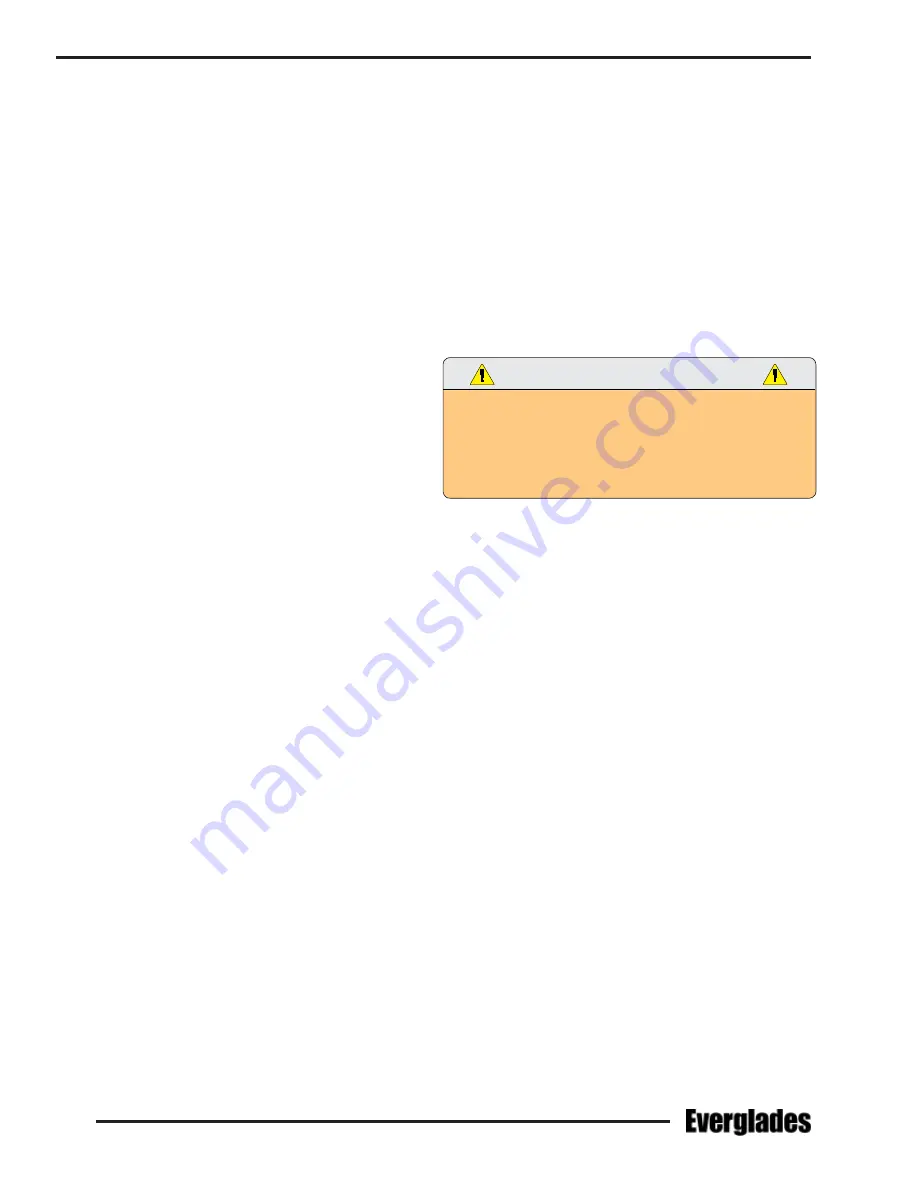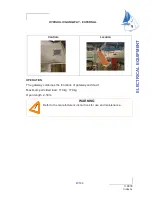
26
Operation
2.3 Pre-Cruise Check
Before Starting the Engines:
• Check the weather forecast and sea conditions
before leaving the dock. Decide if the planned
cruise can be made safely.
• Be sure all required documents are on board.
• Be sure all necessary safety equipment is on
board and operative. This should include items
like the running lights, spotlight, life saving
devices, etc. Refer to the Safety Equipment
chapter for additional information on safety
equipment.
• Make sure you have signal kits and flare guns
aboard. They must be current and in good
operating condition.
• Be sure you have sufficient water and other
provisions for the planned cruise.
• Leave a written message listing details of
your planned cruise with a close friend ashore
(Float Plan). The float plan should include a
description of your boat, where you intend
to cruise and a schedule of when you expect
to arrive in the cruising area and when you
expect to return. Keep the person informed
of any changes in your plan to prevent false
alarms. This information will tell authorities
where to look and the type of boat to look for
in the event you fail to arrive.
• Check the amount of fuel on board. Observe
the “Rule of Thirds”: one third of the fuel for
the trip out, one third to return and one third in
reserve. An additional 15% may be consumed
in rough seas.
• Check the water separating fuel filters for leaks
or corrosion.
• Check the crankcase oil level in each engine.
• Turn the battery switches on.
• Check the bilge water level. Look for other
signs of potential problems. Monitor for the
scent of fuel fumes.
• Test the automatic and manual bilge pump
switches to make sure the systems are working
properly. This is particularly important before
running offshore.
• Have a tool kit aboard. The kit should include
the following basic tools:
Hammer
Electrician’s tape
Screwdrivers
Offset screwdrivers
Lubricating oil
Pliers
Jackknife
Adjustable wrench
Basic 3/8” ratchet set
Vise grip pliers
Hex key set
Needle nose pliers
Wire crimping tool
Wire connector Set
End wrench set
Medium slip-joint pliers
Diagonal cutting pliers DC electrical test light
WARNING
THERE MUST BE AT LEAST ONE PERSONAL FLOTATION
DEVICE ON BOARD FOR EVERY PERSON ON BOARD AND
ONE THROW-OUT FLOTATION DEVICE. CHECK THE U.S.
COAST GUARD STANDARDS FOR THE CORRECT TYPE OF
DEVICE FOR YOUR BOAT.
• Have the following spare parts on board:
Extra light bulbs
Spark plugs
Fuses and circuit breakers Main 12 volt fuses
Assorted stainless screws Assorted stainless bolts
Flashlight and batteries Drain plugs
Engine oil
Propellers
Fuel filters
Propeller hub kits
Fuel hose and clamps Wire ties
Assorted hose clamps
Hydraulic steering fluid
Spare bilge pump
Rags
• Make sure all fire extinguishers are in position
and in good operating condition.
• Check the engine and steering controls for
smooth and proper operation. Be sure the
shift controls are in the neutral position.
• Be sure the emergency stop lanyard is at
-
tached to the operator and the stop switch.
• Refer to the engine owner’s manual for pre-
operation checks specific to your engines.
Summary of Contents for 340 DC
Page 1: ...OWNER S MANUAL 340 DC...
Page 2: ...2 Revision 0 11 07 2018...
Page 14: ...14 NOTES...
Page 22: ...22 NOTES...
Page 25: ...25 Operation...
Page 86: ...86 NOTES...
Page 102: ...102 NOTES...
Page 122: ...122 NOTES...
Page 130: ...130 NOTES...
Page 149: ...149 MAINTENANCE LOG Appendix B Hours Date Dealer Service Repairs...
Page 150: ...150 Maintenance Log Hours Date Dealer Service Repairs...
Page 151: ...151 Maintenance Log Hours Date Dealer Service Repairs...
Page 152: ...152 Maintenance Log Hours Date Dealer Service Repairs...
Page 153: ...153 Maintenance Log Hours Date Dealer Service Repairs...
Page 154: ...154 Maintenance Log Hours Date Dealer Service Repairs...
Page 155: ...155 Appendix C BOATING ACCIDENT REPORT...
Page 156: ...156 Boating Accident Report...
Page 157: ...157 Boating Accident Report...
Page 158: ...158 NOTES...
Page 160: ...160 NOTES...
Page 167: ...CAUSE AND SOLUTION...
















































